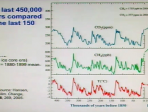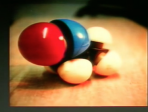 00:41:00
00:41:00
Science, Society & Sustainability
The fact that our modern world is so completely and precariously balanced on Science, Engineering and Technology (SET) makes an understanding of these disciplines by all in positions of significant responsibility vital. lthough wise decision-making ....
More details | Watch now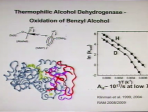 00:35:00
00:35:00
From ‘On Water’ and Enzyme Catalysis to Single Molecules and Quantum Dots, Theory and Experiment
Much of theoretical chemistry has involved equations and their application to experiments, Debye, Debye-Hueckel, Transition State Theory, Kramers, LCAO, RRKM, among others. In fortunate circumstances one can, as in a theory of electron transfer reac....
More details | Watch now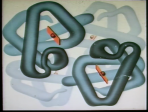 00:36:00
00:36:00
Structural Genomics – Exploring the Protein Universe
In today's post-genomic era, with the availability of the complete DNA sequences of a wide range of organisms, structural biologists are faced with new opportunities and challenges in _structural genomics”. In contrast to classical structural biol....
More details | Watch now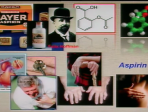 00:31:00
00:31:00
Why Our Proteins Have to Die so We Shall Live
Between the sixties and eighties, most life scientists focused their attention on studies of nucleic acids and the translation of the coded information. Protein degradation was a neglected area, considered to be a non-specific, dead-end process. Whil....
More details | Watch now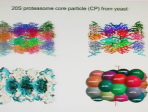 00:42:00
00:42:00
Molecular Machines for Protein Degradation Inside Cells
Within cells or subcellular compartments misfolded and/or short-lived regulatory proteins are degraded by protease machines, cage-forming multi-subunit assemblages. Their proteolytic active sites are sequestered within the particles and located on t....
More details | Watch now 00:31:00
00:31:00
Atmosphere Climate and Chemistry in the Anthropocene
Despite their relatively small mass, 10-5% of the earth biosphere as a whole, generations of ambitious 'homo sapiens' have already played a major and increasing role in changing basic properties of the atmosphere and the earth's surface. Human activ....
More details | Watch now 00:38:00
00:38:00
Passions and Activities beyond Science
"Success in science requires full devotion and relentless day and night activity in the research lab!” This is a notion common among the public, and often also among teachers and beginning students. _Let your scientific activities become your most....
More details | Watch now 00:31:00
00:31:00
Chemistry: the Key to Our Future
Chemistry is not merely a science of making observations in order to better understand Nature. Our science is creative and productive, generating substances of very high value from almost nothing. Chemists already have made enormous contribution to....
More details | Watch now 00:34:00
00:34:00
Greenhouse Gases and Climate Change
The 'greenhouse gases (GHG)' intercept a fraction of outgoing terrestrial infrared radiation, creating the natural greenhouse effect which warmed the atmosphere by approximately 32 Celsius at the beginning of the 20th Century. The activities of manki....
More details | Watch now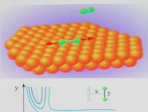 00:31:00
00:31:00
From Atoms to Complexity: Reactions at Surfaces
The interaction of molecules with the surfaces of solids forms the basis of heterogeneous catalysis and can now be investigated in atomic detail. Systems of this kind may, on the other hand, serve as models for studying self-organisation of matter le....
More details | Watch now 00:40:00
00:40:00
The Discovery of Quasi-Periodic Materials
Crystallography has been one of the mature sciences. Over the years, the modern science of crystallography that started by experimenting with x-ray diffraction from crystals in 1912 has developed a major paradigm Ð that all crystals are ordered an....
More details | Watch now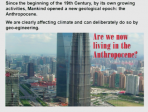 00:23:00
00:23:00
Atmospheric Chemistry and Climate in the Anthropocene
Despite their relatively small mass, 10% of the earth biosphere as a whole, generations of ambitious ‘homo sapiens’ have already played a major and increasing role in changing basic properties of the atmosphere and the earth’s surface. Human ....
More details | Watch now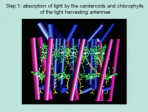 00:30:00
00:30:00
Photosynthesis, Biomass, Biofuels: Conversion Efficiencies and Consequences
It is generally accepted that the global warming, which we undoubtedly observe, is the result of an increased concentration of greenhouse gases like carbon dioxide and methane in the atmosphere. Within this scenario it is evident that we have to re....
More details | Watch now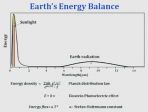 00:34:00
00:34:00
The Science and Policy of Climate Change
Climate change is the most serious environmental challenge facing society in the 21st century. The basic science is clear: the International Panel on Climate Change concluded that there is more than 90% probability that human activities are causing....
More details | Watch now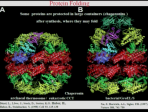 00:35:00
00:35:00
Proteasome and DegP Protease, Mechanisms and Drug Design
Within cells or subcellular compartments, mis-folded and/or short-lived regulatory proteins are degraded by protease machines, cage-forming multi-subunit assemblages, the proteasome and HtrA/DegP. They are essential components in very complex regul....
More details | Watch now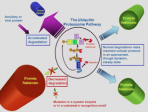 00:29:00
00:29:00
The Ubiquitin Proteolytic System as a Novel Drug Development Platform
Between the 50s and 80s, most studies in biomedicine focused on the central dogma - the translation of the information coded by DNA to RNA and proteins. Protein degradation was a neglected area, considered to be a non-specific, dead-end process. ....
More details | Watch now 00:28:00
00:28:00
Roles of the Ubiquitin System in Health and Disease
The selective degradation of many short-lived proteins in eukaryotic cells is carried out by the ubiquitin-mediated proteolytic system. In this pathway, proteins are targeted for degradation by covalent ligation to ubiquitin, a highly conserved sma....
More details | Watch now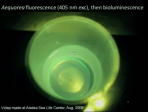 00:33:00
00:33:00
Engineering Molecules for Fun, Profit, and Clinical Relevance
Molecules to observe and manipulate biological systems and disease processes can be devised by a variety of strategies, ranging from pure chemical design and total synthesis to genome mining and high-throughput directed evolution. Examples of both ....
More details | Watch now 00:36:00
00:36:00
Magical Power of d-Block Transition Metals: Past, Present and Future
Until recently, most of the 24 d-block transition metals had been used primarily as useful materials for (i) construction and also as tools and containers, etc., (Ti, Zr, Fe and their alloys with V, Cr, Mn, Co, Ni, etc.), (ii) precious and ornamental....
More details | Watch now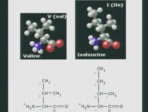 00:40:00
00:40:00
Glimpses of Chemical Wizardry
In an evangelical spirit, three vignettes will be presented that have the character of molecular parables: stories with lessons that transcend the specific details.(1) How knowledge of the orientation of a methyl group with respect to a neighboring d....
More details | Watch now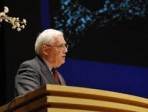 00:32:00
00:32:00
The Fuel of Life
The lecture will be devoted to the topic of how the biological world supplies itself with energy to make biology work, and what medical consequences ensue when the energy supply chain in our bodies is damaged or defective. We derive our energy from....
More details | Watch now 00:30:00
00:30:00
Catalysis at Surfaces: From Atoms to Complexity
Catalysis by solid surfaces is, among others, of importance for the chemical industry (e.g. the Haber-Bosch process) as well as for environmental chemistry (car exhaust catalyst). Surface physical techniques enable investigation of the underlying e....
More details | Watch now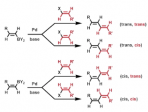 00:30:00
00:30:00
Cross-Coupling Reactions of Organoboranes: An Easy Way for Carbon-Carbon Bonding
The palladium-catalyzed cross-coupling reaction between different types of organoboron compounds and various organic halides in the presence of base provides a powerful and general methodology for the formation of carbon-carbon bonds. The (sp3)C-B ....
More details | Watch now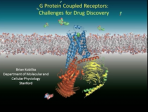 00:27:00
00:27:00
G Protein Coupled Receptors: Challenges for Drug Discovery
G protein coupled receptors (GPCRs) conduct the majority of cellular responses to hormones and neurotransmitters, and are therefore the largest group of pharmaceutical targets for a broad spectrum of diseases. Identification of genes for GPCRs, ini....
More details | Watch nowAdvances in Olefin Metathesis Employing Molybdenum and Tungsten Catalysts
Olefin metathesis is an irresistible way to make C=C bonds catalytically in organic molecules and polymers, both as a consequence of its very nature, i.e. the synthesis of C=C bonds from C=C bonds, and because of the control that can be exercised thr....
More details | Watch now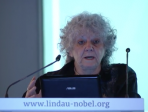 00:33:00
00:33:00
Curiosity and its Fruits: From Basic Science to Advanced Medicine
Ribosomes, the universal cellular machines that translate the genetic code into proteins, are targeted by many antibiotics that paralyze them by binding to their functional sites. Antibiotics binding modes, inhibitory actions and synergism pathways....
More details | Watch now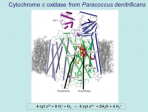 00:35:00
00:35:00
Structure and Mechanism of Otto Warburg’s Respiratory Enzyme, the Cytochrome c Oxidase
The oxygen, you breathe in, is converted to water by cytochrome c oxidase, using electrons provided by cytochrome c and protons from the aqueous milieu of the body. This fundamental enzyme has been discovered already in 1886, and studied extensivel....
More details | Watch now 00:34:00
00:34:00
Drug Development in the 21st Century – Are We Going to Cure All Diseases?
Many important drugs such as penicillin, aspirin, or digitalis, were discovered by serendipity - some by curious researchers who accidentally noted a "strange" phenomenon, and some by isolation of active ingredients form plants known for centuries to....
More details | Watch now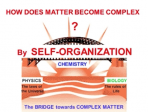 00:31:00
00:31:00
Green Chemistry and Catalysis
Much of the chemical industry is based on processes that were developed decades ago. The change in the cost of petroleum carbon and energy sources and the need to control emissions of carbon dioxide and other pollutants will change the rules of the....
More details | Watch now 00:35:00
00:35:00
Perspectives in Chemistry – Towards Adaptive Chemistry
Supramolecular chemistry lies beyond molecular chemistry. It aims at implementing highly complex chemical systems from molecular components held together by non-covalent intermolecular forces and effecting molecular recognition, catalysis and trans....
More details | Watch now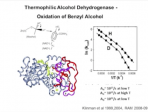 00:32:00
00:32:00
Single Molecule Studies of Initial Steps in Dye Sensitized Solar Cells and of Quantum Dots – Examples of Electron Transfers and Relation to Ensemble Studies
We consider two fields of single molecule studies of intermittently fluorescing systems. In both fields the intermittency is assumed to involve diffusion controlled electron transfer. One of these studies involves the initial steps in dye-sensiti....
More details | Watch nowConformational Plasticity of G-Protein-Coupled Receptors (GPCRs) studied by NMR in Solution
As an introduction, some principles of nuclear spin physics applying to studies of integral membrane proteins (IMP) will be reviewed. Applications of resulting nuclear magnetic resonance (NMR) techniques will then be illustrated with studies of G-p....
More details | Watch now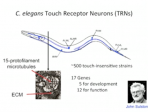 00:32:00
00:32:00
Tickling Worms: Surprises From Basic Research
Research, at least my research, has never been linear. I have found that my lab and I often double back on problems after years of inactivity or go off in entirely new directions as dictated by the work and people's interests. This lack of direct....
More details | Watch now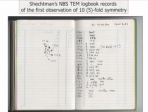 00:35:00
00:35:00
Quasi-Periodic Materials – Crystal Redefined
Crystallography has been one of the mature sciences. Over the years, the modern science of crystallography that started by experimenting with x-ray diffraction from crystals in 1912, has developed a major paradigm that all crystals are ordered and ....
More details | Watch now 00:37:00
00:37:00
Communicating Climate Change Science
Climate change represents one of the most serious challenges that society is facing in this century. It is important for humanity to limit its interference with the climate system by profoundly modifying activities such as burning fossil fuels and ....
More details | Watch now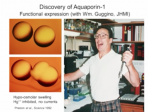 00:30:00
00:30:00
Aquaporin Water Channels: From Atomic Structure to Malaria
Aquaporin (AQP) water channel proteins enable high water permeability of certain biological membranes. Discovered in human red cells but expressed in multiple tissues, AQP1 has been thoroughly characterized and its atomic structure is known. Expr....
More details | Watch now 00:38:00
00:38:00
Widen Your Scope by Extracurricular Activities: My Example
Some observers might think that fierce scientific competition borders on a rat race. According to Wikipedia: "A rat race is an endless, self-defeating, or pointless pursuit. It conjures up the image of the futile efforts of a lab rat trying to es....
More details | Watch now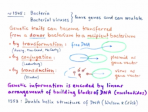 00:38:00
00:38:00
Cultural Values of Scientific Knowledge
The acquisition of scientific knowledge largely depends on the availability of appropriate research approaches and methodologies. Novel scientific knowledge represents cultural values. On the one hand, it enriches our world-view with impacts on o....
More details | Watch now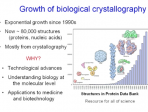 00:34:00
00:34:00
Proteases and Their Control in Health and Disease
Proteolytic enzymes catalyse a very simple chemical reaction, the hydrolytic cleavage of a peptide bond. Nevertheless, they constitute a most diverse and numerous lineage of proteins. The reason lies in their role as components of many regulatory....
More details | Watch now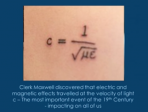 00:32:00
00:32:00
Four Horsemen of the 21st Century Apocalypse
The ‘Common Sense’ that is needed to survive does not necessarily provide correct answers to the way the Universe works. Science is actually not that old, it really only started in about the 16th Century and was a byproduct of ‘The Enlightenm....
More details | Watch now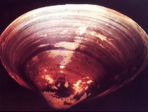 00:33:00
00:33:00
The Ubiquitin System
The selective degradation of many short-lived proteins in eukaryotic cells is carried out by the ubiquitin-mediated proteolytic system. In this pathway, proteins are targeted for degradation by covalent ligation to ubiquitin, a highly conserved sma....
More details | Watch now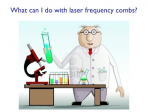 00:34:00
00:34:00
What Can We Do with Laser Frequency Combs?
The spectrum of a frequency comb, commonly generated by a mode-locked femtosecond laser consists of several hundred thousand precisely evenly spaced spectral lines. Such laser frequency combs have revolutionized the art measuring the frequency of l....
More details | Watch nowModel Synthesis for Ceramics: Superconductors, Magnets and Others
The discovery of superconductivity in hole doped La2CuO4 was motivated by the interest to find this phenomenon in an oxide. After the discovery near 35 K, copper oxides with transition temperatures of up to 131 K at normal pressure were found, i.e.....
More details | Watch nowThe Energy and Climate Change Challenges and Opportunities
Science and technology has profoundly transformed the world. After giving a few historical examples, beginning with the industrial revolution, I will discuss the challenges, opportunities and necessity for the world to transition to a sustainable e....
More details | Watch nowSuperposition, Entanglement, and Raising Schrödinger’s Cat
In 1935, Erwin Schrödinger, one of the inventors of quantum mechanics, illustrated his discomfort with the theory by pointing out that its extension to the macroscopic world could lead to bizarre situations such as a cat being simultaneously alive a....
More details | Watch nowControlling Photons in a Box and Exploring the Quantum to Classical Boundary
The founders of quantum theory assumed in 'thought experiments' that they were manipulating isolated quantum systems, obeying the counterintuitive laws which they had just discovered. Technological advances have recently turned these virtual experi....
More details | Watch now 00:30:00
00:30:00
Powering the Future
Some seeds of what to do in the climate/energy controversy are contained in what will be. In this talk I shall ask everyone to jump over contemporary politics and make a mental journey to a time, several centuries from now, when nobody uses carbon-....
More details | Watch now